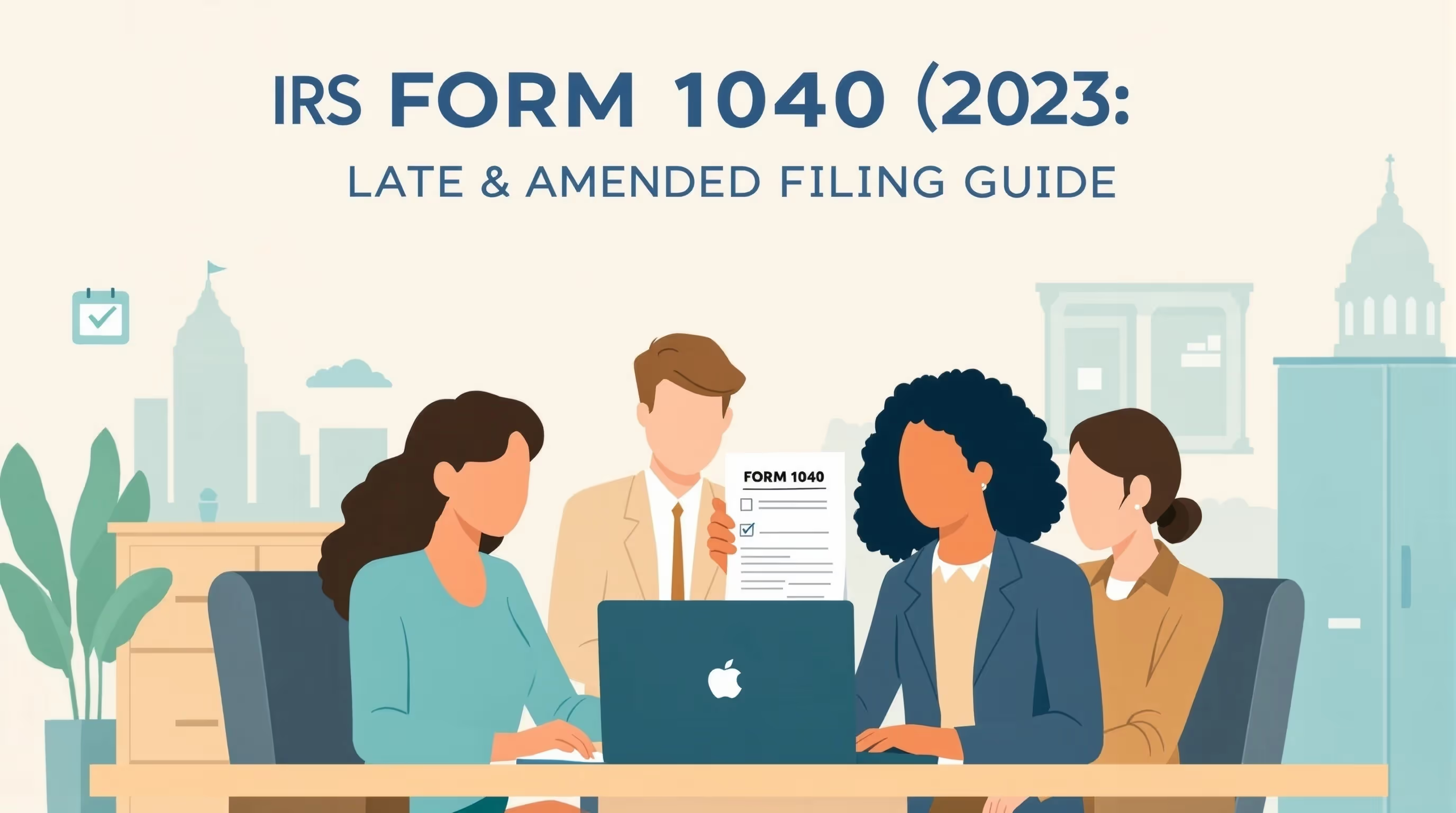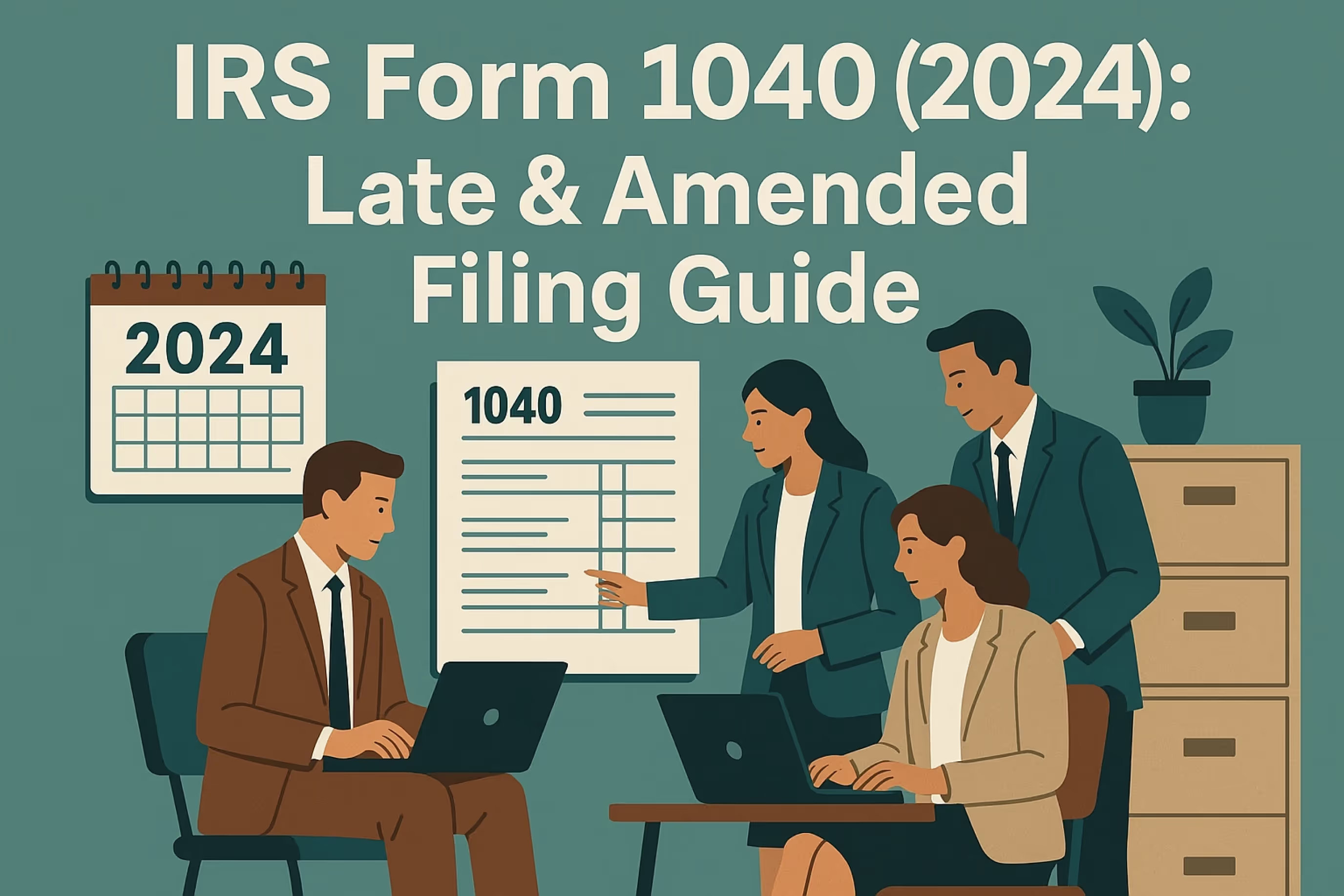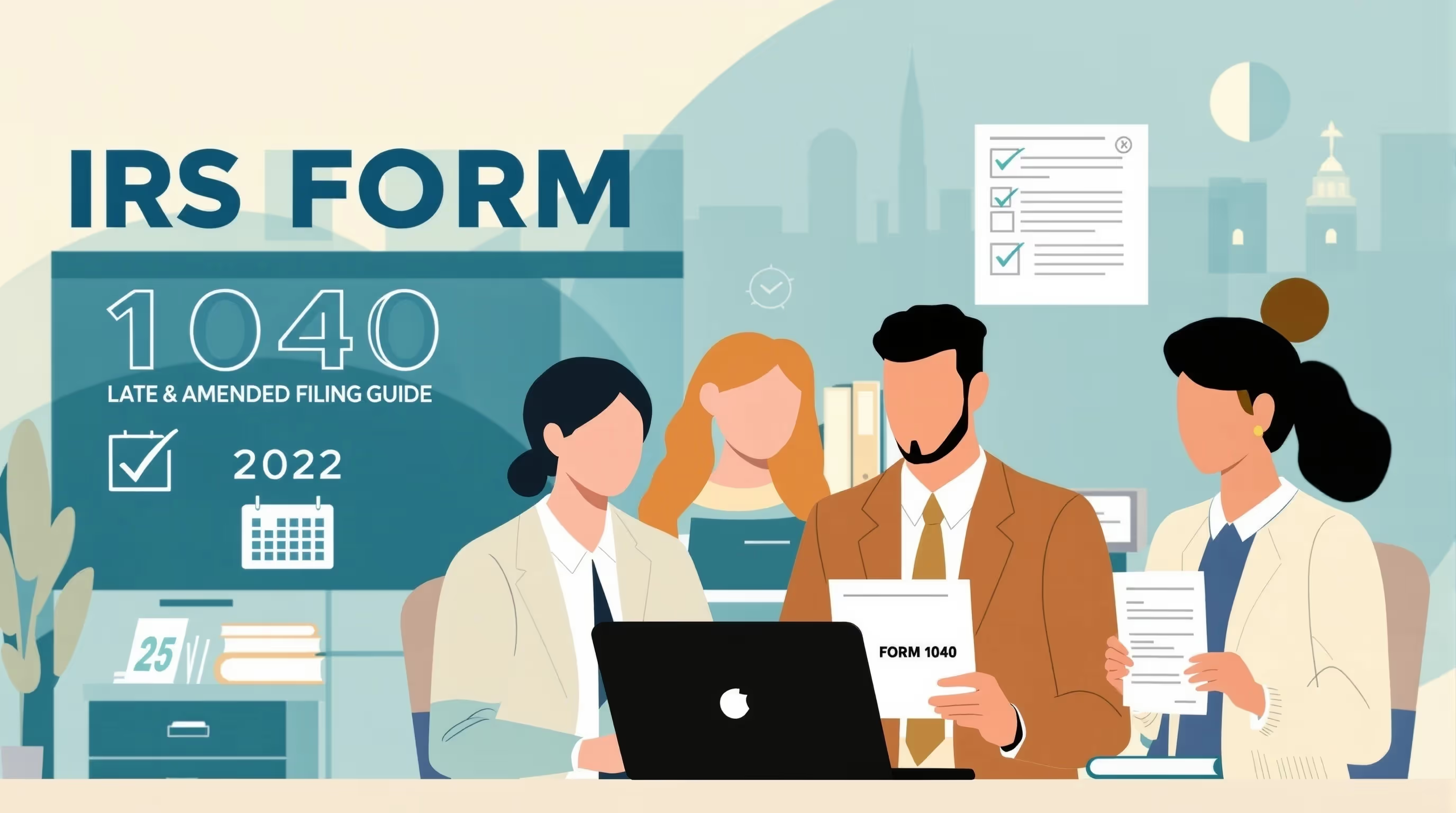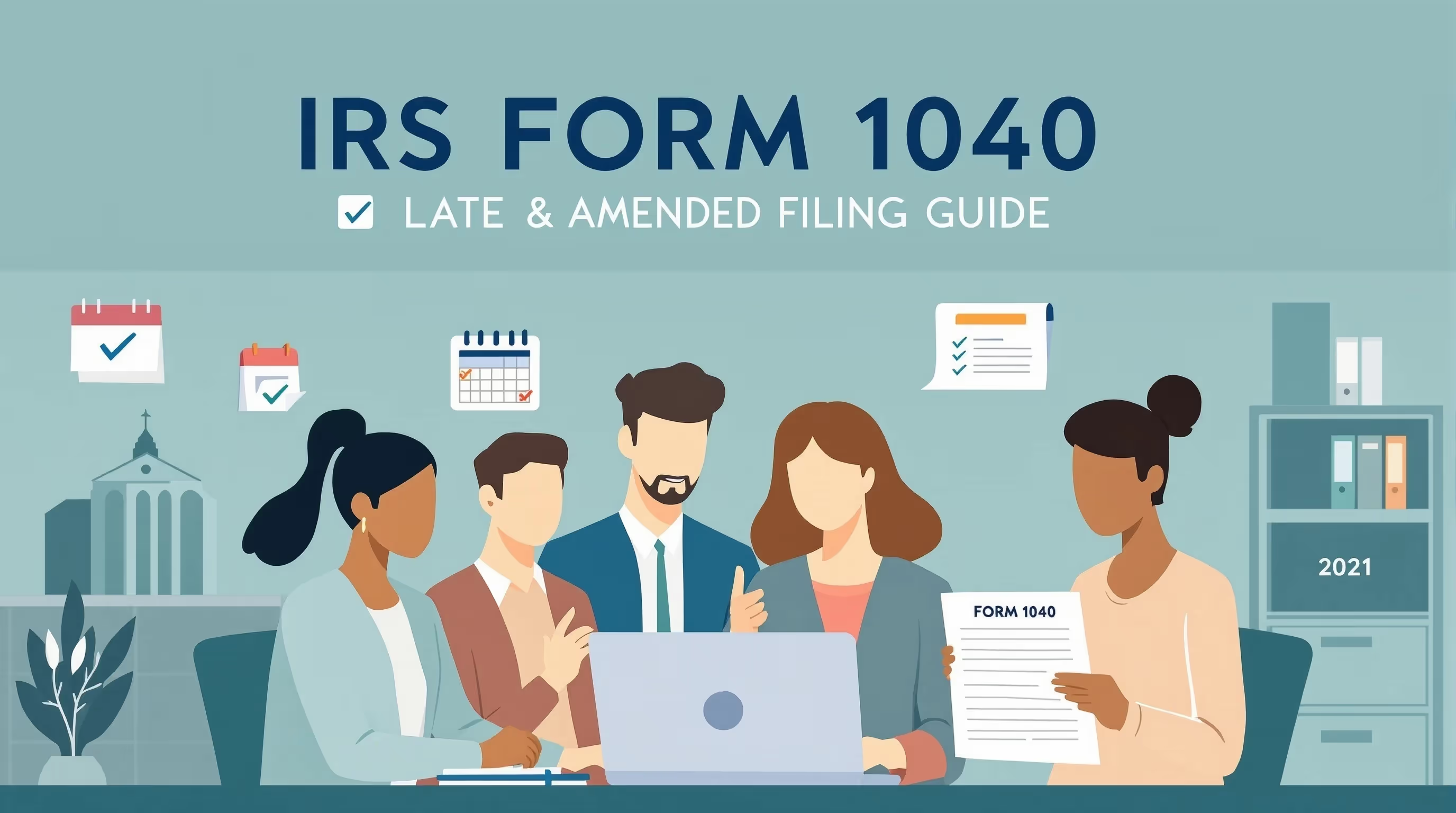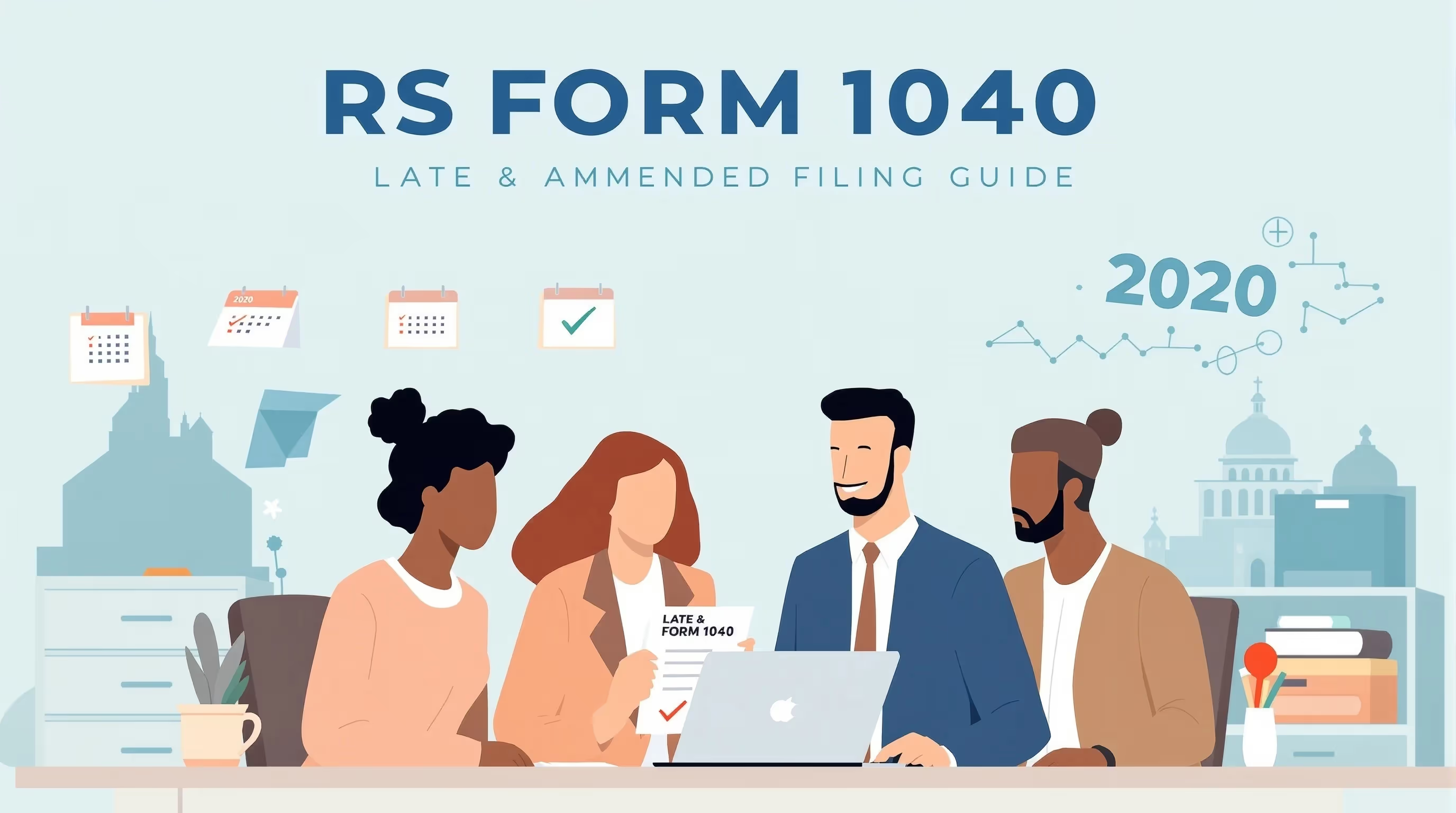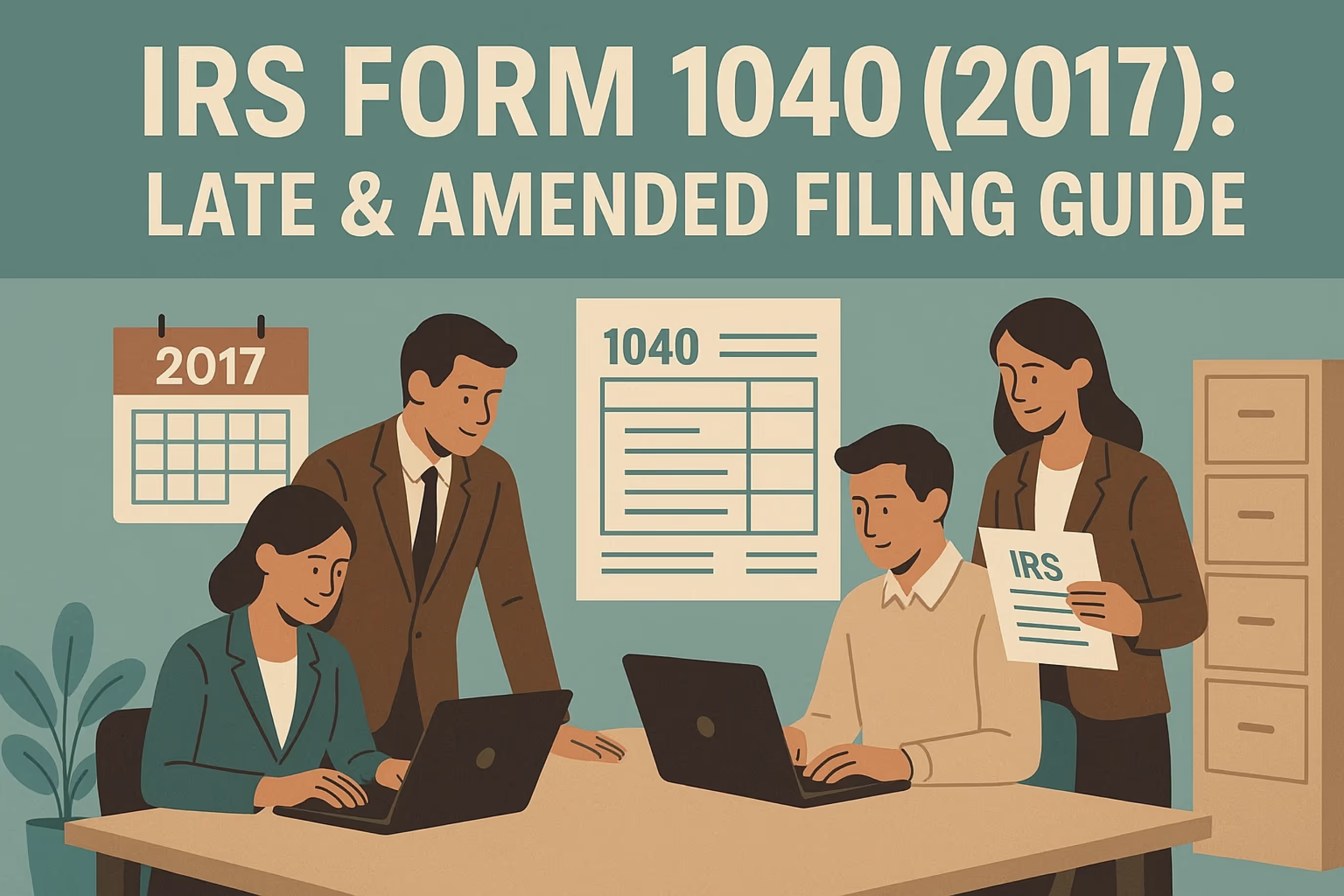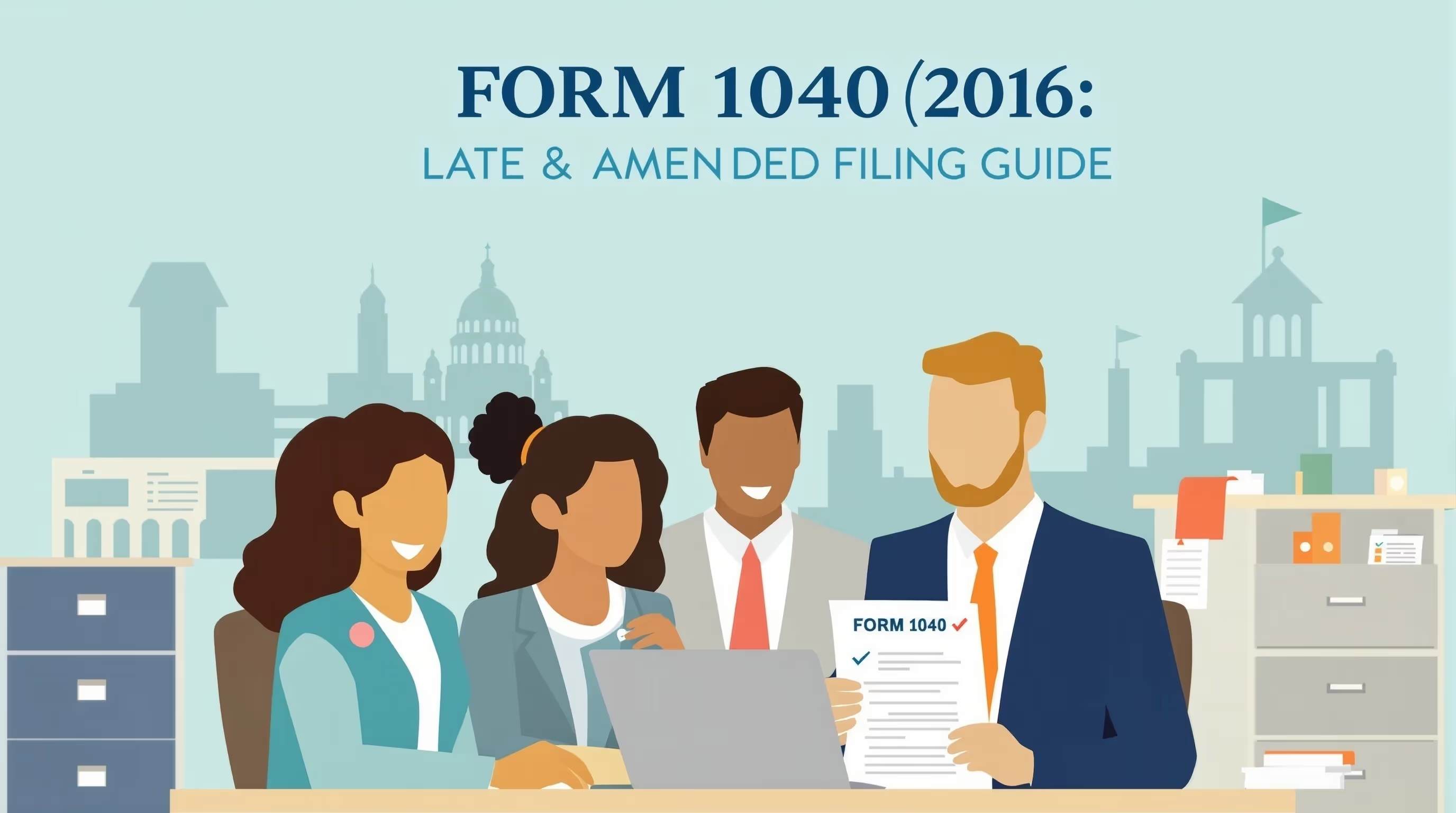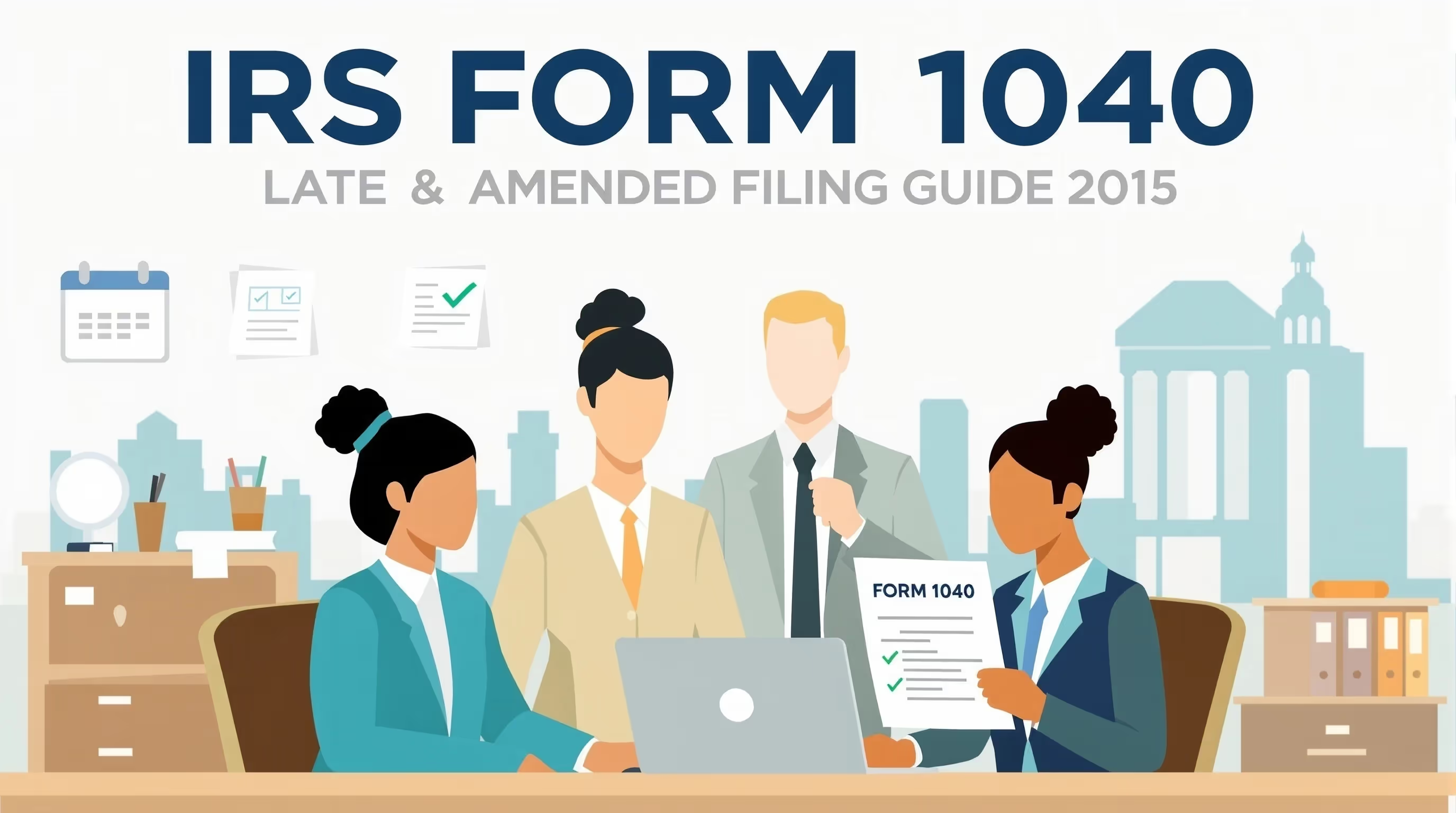IRS Form 1040 (2018): Late & Amended Filing Guide
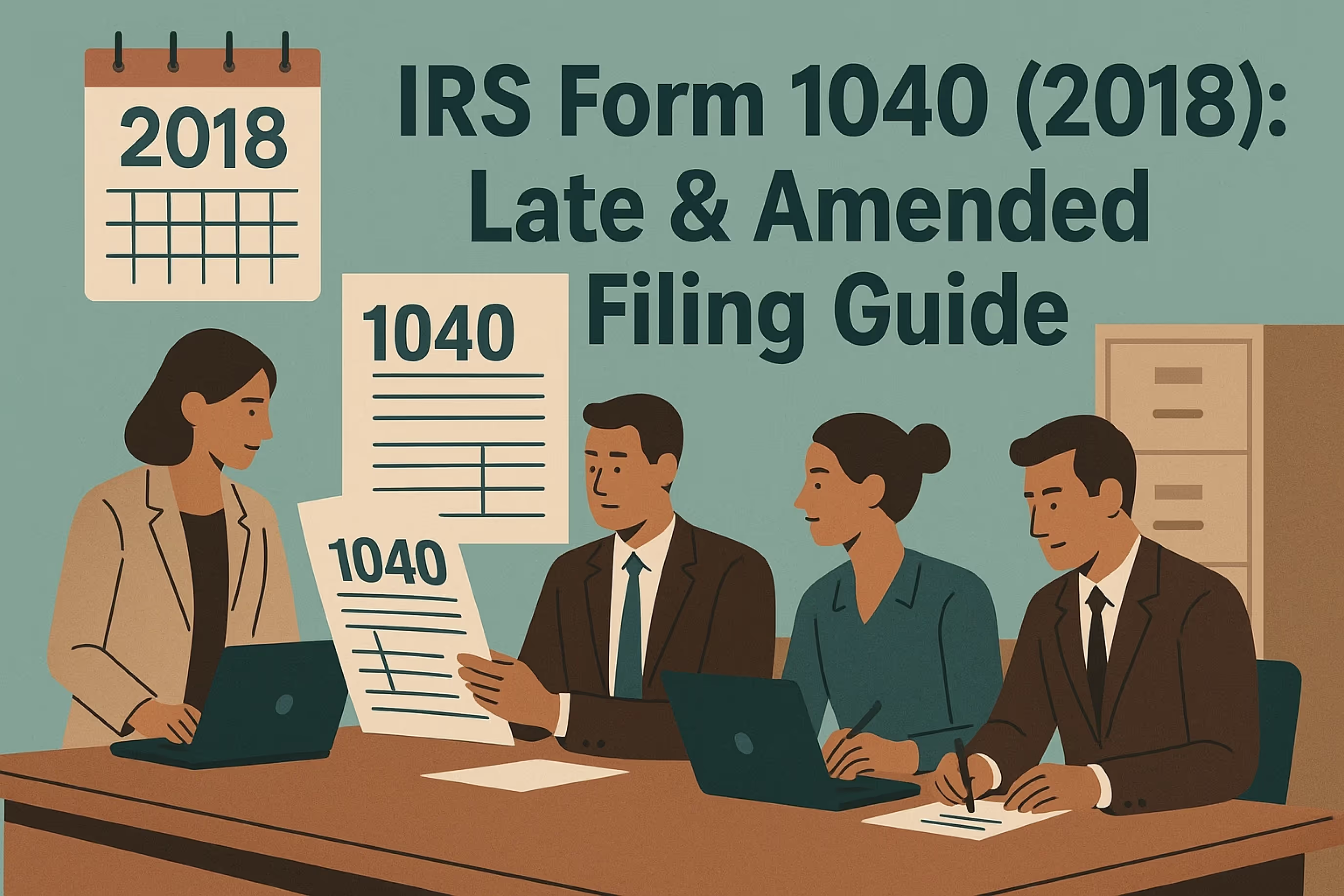
What IRS Form 1040 (2018) Is For
IRS Form 1040 (2018) is the federal income tax return used by U.S. citizens and resident aliens to report income, deductions, and credits and calculate their total tax or refund for the 2018 tax year. That version replaced Forms 1040A and 1040EZ, consolidating everything into one streamlined format with six new numbered schedules.
The 2018 form made it easier for individual taxpayers to report taxes withheld, refundable credits, and estimated tax payments. If you missed the original due date for filing or discovered an error later, you can still file late or amend your return. Doing so ensures that the IRS handles any unpaid tax or refund owed to you correctly.
When to File a Late or Amended 2018 Tax Return
You should file your 2018 income tax return if you missed the original due date, owe tax, or need to correct errors. Filing late or unfiled federal returns helps stop additional penalties and limits interest while the IRS updates your account. Even if you cannot pay in full, submitting your return demonstrates good faith and helps reduce penalties that continue to accrue while the balance remains unpaid. Refund claims for the 2018 tax year expired on April 15, 2022. Any refundable credits claimed after that date will no longer be eligible for claim.
Key Tax Law Changes for 2018
The 2018 tax year introduced sweeping reforms under the Tax Cuts and Jobs Act that affected nearly every taxpayer:
- Standard deductions increased to $12,000 for single filers, $24,000 for joint filers, and $18,000 for heads of household.
- Personal exemptions were suspended.
- Tax rates shifted to 10%, 12%, 22%, 24%, 32%, 35%, and 37%.
- The child tax credit doubled to $2,000 per child, and a new $500 credit applied to other dependents.
- State and local tax deductions were capped at $10,000.
- Miscellaneous itemized deductions subject to the 2% floor were eliminated.
- Qualified business income deductions of up to 20% became available for certain S corporations and pass-through businesses.
These updates made the 2018 tax year one of the most significant in recent history, affecting how taxpayers calculate their total tax and determining whether they are eligible for refundable credits.
Step-by-Step: How to File a Late 2018 Return
- Gather IRS tax transcripts or records of income to confirm taxes withheld and estimated tax payments.
- Complete the correct 2018 forms, using the redesigned Form 1040 and any required Schedules 1 through 6.
- Attach all supporting documents, such as Forms W-2, 1099s, and any additional schedules needed for credits or deductions.
- Calculate penalties and interest for late filing and late payment using current IRS rates. Penalty and interest charges are incurred for every partial month that the balance remains unpaid.
- Return your documents to the appropriate IRS service center or file electronically, if that option is still available. Always keep proof of mailing or electronic confirmation as a record of your submission.
- Keep complete copies of your return, payments, and correspondence for at least three years from the filing date.
The 2018 form replaced Forms 1040A and 1040EZ, consolidating all information into a single format. You can download prior‑year forms and instructions from the IRS Form Help Center.
Common Mistakes and How to Avoid Them
- Using the wrong year’s forms causes significant errors. Always file IRS Form 1040 (2018) for the 2018 tax year to ensure your total tax and refund are calculated under the correct law.
- Failing to consider the 2018 tax law changes can result in incorrect calculations. The 2018 form eliminated personal exemptions, increased standard deductions, and modified the application of refundable credits.
- Failing to match income with IRS transcripts can trigger a tax penalty. Review all W-2s, 1099s, and estimated tax payments before filing to avoid underpayment and unpaid tax balances.
- Miscalculating the failure-to-pay penalty or the late-payment penalty adds costs. These penalties apply for each part of a month that the balance remains unpaid, and interest continues until payment is made in full.
- Missing the refund deadline permanently forfeits refundable credits. For tax year 2018, the due date was April 15, 2022, after which refunds and credits could no longer be claimed.
- Failing to file a required state return can result in additional penalties and interest. Most states require a return when you file a federal income tax return for the same year.
If you're unsure how to handle IRS notices or balance-due letters, you can authorize a representative through our IRS Power of Attorney guide.
What Happens After You File
The IRS usually processes a 2018 late return within six to eight weeks if mailed, or two to three weeks if e-filed. If you owe tax, you will receive a balance due notice showing any failure to pay penalty, late payment penalty, and interest charges that continue until the tax is fully paid. You can pay electronically through a financial institution, by mail, or request an installment agreement or offer in compromise if eligible.
If your unpaid tax remains after the extended due date, penalties and interest continue to accrue until the balance is paid in full. Refunds are issued once all corrections are complete, but the IRS may hold current-year refunds if prior-year taxes remain unpaid. Respond promptly to any IRS contact to avoid further action or collection notices.
If you owe tax, you will receive a balance due notice. You can pay electronically, mail a payment, or apply using our IRS payment plan guide to set up an installment agreement.
Penalties and Interest Explained
The failure-to-file penalty amounts to 5% of the unpaid tax for each month or part of a month that the return is late, with a maximum penalty capped at 25%. A minimum penalty applies if the return is filed more than 60 days after the original due date. The failure-to-pay penalty is 0.5% per month of the balance owed and increases if the tax remains unpaid after the extended due date.
Interest charges accrue daily from the original due date until all taxes, penalties, and interest are paid in full. Rates change quarterly, and paying even part of the balance helps reduce future charges. Taxpayers acting in good faith may request a waiver or abatement by contacting the IRS after filing their return. Taxpayers acting in good faith may request a waiver or reduction of charges through IRS penalty abatement after filing their return.
If you need help resolving back taxes or setting up a payment plan, explore our professional IRS tax relief services for personalized support.
FAQs
What should I do if I'm unable to pay the full amount due?
File your return to avoid incurring the failure-to-file penalty. You can request an installment plan, make estimated tax payments, or apply for an offer in compromise if eligible. Interest and late payment penalties continue until your balance is fully paid.
Can I still receive a refund for 2018?
No, the deadline to claim a refund was April 15, 2022. Thereafter, any overpayment or refundable credits for that year are forfeited.
How do I obtain my 2018 tax transcripts?
You can order them online at IRS.gov, by mail using Form 4506-T, or by phone at 1-800-908-9946. Transcripts help confirm income and taxes withheld before you file.
What if I find an error after filing?
You can file Form 1040-X to amend your 2018 return. You generally have three years from the date you filed or two years from when you paid, whichever is later, to claim corrections or refunds.
How does filing a late return affect current taxes?
Filing late generally doesn’t affect current-year returns, but the IRS may hold current refunds if prior-year balances remain unpaid. It is best to pay penalties and interest promptly to avoid delays in future refunds.
10 Steps to Complete IRS Form 1040 (2018)
Follow these steps to complete and submit your IRS Form 1040 (2018) correctly.
1. Gather all necessary documents, including income statements, deduction records, and any prior year tax documents if filing unfiled returns.
2. Fill out each section of the Form 1040 carefully, ensuring accuracy and completeness.
3. Attach all required schedules and supporting forms as needed for your specific financial situation.
4. Review your entries for accuracy, typos, and omissions.
5. Sign and date your Form 1040 to certify the information provided.
6. Confirm your mailing address or electronic filing details.
7. Prepare your payment if you owe taxes, or verify your refund options if applicable.
8. Note: Choose the option below that fits your specific situation. The correct submission method depends on your IRS notice or the form's official instructions.
• Submit Your Form to the Correct IRS Office
Follow the address or fax number in your IRS notice or from your assigned revenue officer.
If no contact is listed, call 800-829-1040 to confirm where to send it.
Use certified mail or another trackable method and keep proof of delivery.
• File or Mail Your Form 1040
Confirm the correct submission address on the official IRS page: https://www.irs.gov/filing/where-to-file-paper-tax-returns-with-or-without-a-payment
Use certified mail and keep proof of delivery if you mail your form.
• Mail Your Form 1040
Send to: [Insert appropriate IRS address based on your location and form instructions.]
Use certified mail and keep proof of delivery.
• Submit Your Form
Follow the instructions on the IRS page for electronic or fax submission: https://www.irs.gov/
Keep fax confirmation or submission receipt with your records.
9. Keep Copies for Your Records
Retain your completed form, all attachments, and proof of mailing for at least three years.
Store both paper and digital copies securely in case the IRS requests verification later.
10. Mail your completed form or submit electronically. 📞 Need peace of mind before you send it? Call +(888) 260 9441 or schedule a free form review at https://www.gettaxreliefnow.com/.
If you complete these 10 steps, your IRS Form 1040 (2018) should be properly filed and you'll minimize the chance of IRS delays, penalties, or rejections.








